PRICING
SERVICES
DIGITAL MARKETING SERVICES
COMPETITIVE ANALYSISSEO SERVICESCONVERSION RATE OPTIMIZATIONWEB DESIGNCONTENT MARKETINGPAY PER CLICKRESOURCES
Reducing cost per conversion might seem intimidating, but focusing on a few key strategies can make all the difference. You start by refining your landing pages to guarantee they resonate with your audience and match your ad messages perfectly. By conducting A/B tests, you find which elements boost performance most effectively. Then, enhancing ad targeting using customer data and lookalike audiences allows you to reach potential customers more efficiently. But don't stop there; retargeting strategies can remind users of products they've shown interest in, which is crucial for increasing conversions cost-effectively. So, what's the next step to streamline your conversion costs?
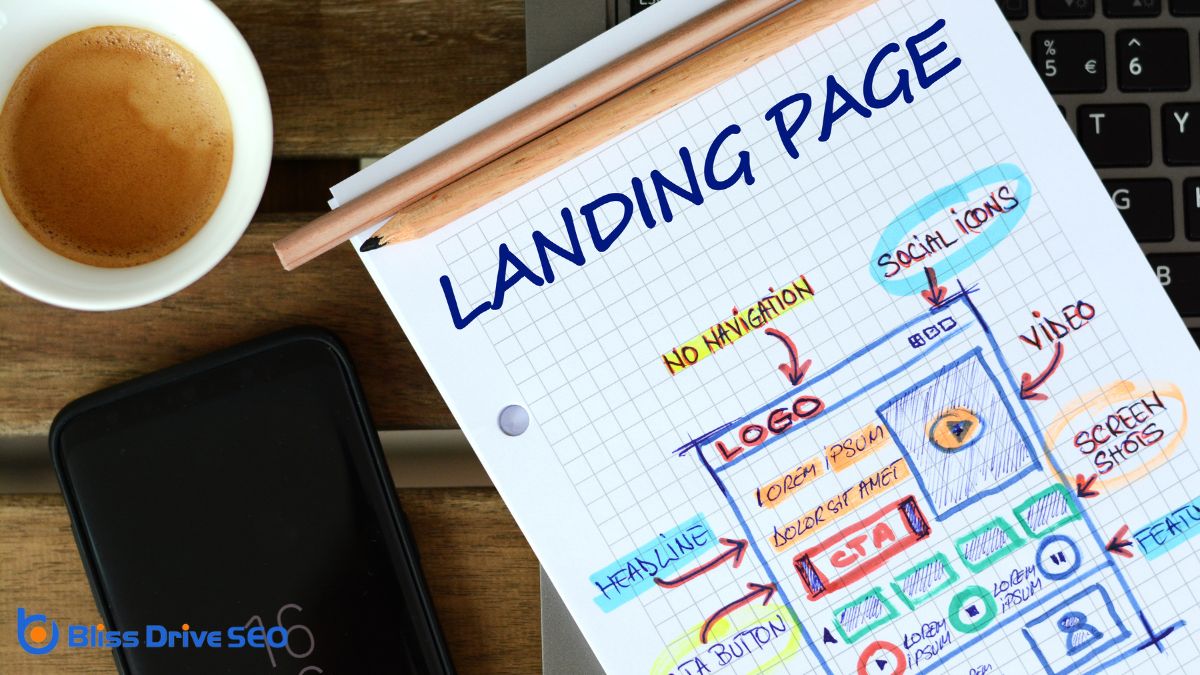
Although it might seem intimidating, optimizing your landing pages is an essential step in reducing cost per conversion. You need to guarantee that when visitors arrive, they're met with a clear, compelling message that matches the ad they clicked. This consistency builds trust and encourages them to take action.
Start by refining your headlines and calls to action, making them concise and relevant. Ascertain your page loads quickly; a slow page can lead to high bounce rates. Use visuals sparingly but effectively to enhance the user experience without overwhelming them.
Additionally, make navigation intuitive so visitors can easily find what they're looking for. Test different versions of your landing page to see which performs best. This optimization can considerably lower your conversion costs.
To effectively reduce your cost per conversion, enhancing your ad targeting is essential. You need to focus on reaching the right audience.
Start by analyzing your customer data to identify key demographics, interests, and behaviors. Use these insights to refine your targeting options. Platforms like Google Ads and Facebook offer robust tools for narrowing down your audience based on location, age, interests, and even previous interactions with your brand.
Don't forget to leverage lookalike audiences, which allow you to target users similar to your existing customers.
Also, exclude audiences unlikely to convert to avoid wasted spending. Keep an eye on performance metrics and adjust your targeting as needed.
When aiming to reduce your cost per conversion, one effective strategy is to utilize A/B testing. This approach lets you compare two versions of a webpage or ad to see which performs better.
Start by changing one element at a time, like a headline, image, or call-to-action. By measuring the impact on conversions, you'll identify what resonates with your audience.
A/B testing provides clear data to optimize your marketing efforts, ensuring you're not spending money on ineffective strategies. It's essential to run tests long enough to gather significant results, but don't hesitate to make changes once you've got conclusive data.
Boosting your Quality Score can greatly lower your cost per conversion by improving your ad relevance, expected click-through rate, and landing page experience.
Start by making sure your ads closely match the keywords you're targeting. This increases relevance, making it more likely your ad will be shown and clicked.
Next, focus on crafting compelling ad copy that encourages clicks. A higher click-through rate signals to search engines that your ad meets searchers' needs.
Also, optimize your landing page to deliver a seamless experience. Make certain it loads quickly, has relevant content, and is easy to navigate. A well-optimized page reduces bounce rates and increases conversions.
To boost your conversion rates without increasing costs, leverage retargeting strategies by utilizing dynamic ads that adapt to user behavior.
Segment your audiences effectively to tailor your message and increase relevance.
Although digital advertising has evolved considerably, dynamic ads remain a powerful tool in your marketing arsenal, especially when leveraging retargeting strategies.
By using dynamic ads, you can tailor content to individual users based on their previous interactions with your website. This personalization boosts engagement, making potential customers more likely to convert.
Imagine a user browsed a specific product but didn't purchase it. A dynamic ad can showcase that exact product, enticing them to return and complete the purchase.
This targeted approach reduces wasted ad spend, focusing only on interested users. It's crucial to monitor the performance of these ads closely, adjusting as necessary to maximize effectiveness.
Embrace dynamic ads and watch your cost per conversion decrease while increasing your return on investment.
When it comes to maximizing the efficiency of your advertising campaigns, effectively segmenting your audience is essential. This means dividing your audience into specific groups based on shared characteristics or behaviors. Doing so allows you to tailor your messages, ensuring they resonate more deeply.
Retargeting strategies play an important role here. By tracking users who've shown interest in your products but haven't converted, you can craft ads that remind them of what they're missing. This personalized approach keeps your brand top-of-mind and encourages them to complete their purchase.
Use tools like Google Ads or Facebook's Custom Audiences to set up these segments. Remember, the more relevant your ads, the better your chances of reducing cost per conversion.

To reduce your cost per conversion, you need to analyze your conversion funnels to pinpoint where users drop off.
By identifying these weaknesses, you can focus on optimizing the user experience to guide potential customers smoothly toward conversion.
This approach not only increases conversions but also makes your marketing spending more efficient.
Understanding where your conversion funnel may falter is critical for optimizing performance and reducing costs.
Begin by examining each stage of the funnel to spot where users drop off. Analyze metrics like bounce rates, exit pages, and time on site to identify problem areas. Are visitors leaving at the same stage repeatedly? Investigate deeper into what might cause these exits.
Consider whether your call-to-action is clear and compelling or if your messaging aligns with user expectations. Maybe the checkout process is too complex, causing frustration and abandonment.
Use tools like heat maps or session recordings to gain insights into user behavior. By pinpointing weaknesses, you can make informed adjustments, ensuring a smoother journey that decreases costs and increases conversions.
Although optimizing user experience may seem challenging, it's vital for improving your conversion funnel's efficiency. Start by analyzing your conversion funnels to pinpoint where users drop off. Focus on simplifying the journey. Each step should be intuitive, with clear calls to action guiding users smoothly from one stage to the next.
Make certain your website or app loads quickly; slow performance can frustrate potential customers. Responsive design is essential as more people access sites via mobile devices.
Gather feedback directly from users to understand their pain points. Use A/B testing to experiment with different layouts, colors, or messaging to see what resonates best. Streamlining navigation and minimizing distractions can enhance user focus.
When aiming to reduce cost per conversion, adjusting your bidding strategies can be a game-changer.
Start by analyzing which keywords and ads yield the highest conversions. Use this data to allocate your budget wisely, focusing on high-performing areas.
Consider implementing automated bidding strategies like target CPA (Cost Per Acquisition) or ROAS (Return on Ad Spend) to optimize for conversions while keeping costs in check.
Make sure to regularly monitor and tweak these strategies based on performance metrics. Don't hesitate to lower bids on underperforming keywords or pause them altogether.
It's also beneficial to experiment with bid adjustments for different devices, locations, and times of day.
By refining your landing pages, you'll guarantee clarity and relevance that align with your ads. Enhance your ad targeting by analyzing customer data and using lookalike audiences to reach potential customers more efficiently. Don't forget to utilize A/B testing to find the most effective elements. Improve your quality score, leverage retargeting, and analyze conversion funnels. Adjust your bidding strategies accordingly to reduce your cost per conversion and maximize your marketing efforts.
When monitoring conversion rates, you start by setting clear goals and ensuring you know what success looks like for your business. You must choose the right tools to track these goals effectively, as not all tools will suit your specific needs. Analyzing conversion funnels can reveal where potential customers drop off, but interpreting this data for growth requires a keen eye and strategic thinking. Have you considered how A/B testing and tracking user behavior can refine your approach? These steps might just be the key to releasing more successful conversions, but there's more to explore.
Conversion rates are an essential metric that reveals how effectively your marketing efforts turn prospects into customers. By understanding conversion rates, you gain insight into how well your strategies are working.
It's vital to identify the specific actions you want your audience to complete, like making a purchase or signing up for a newsletter. Once you know this, calculate the conversion rate by dividing the number of completed actions by the total number of visitors, then multiply by 100 to get a percentage.
This percentage shows you the success rate of your efforts. Monitoring these rates helps you pinpoint what's working and what needs improvement, allowing you to make data-driven decisions to enhance your marketing strategy and achieve better results.

Clarity is key when setting goals for your marketing efforts. You need to define what success looks like by establishing specific, measurable objectives.
Start by asking yourself what you want to achieve. Is it more newsletter sign-ups, product purchases, or maybe a boost in social media engagement? Once you know your target, break it down into clear metrics. For example, aim to increase newsletter sign-ups by 20% in three months.
Don't forget to align these goals with your overall business objectives. They should be realistic and achievable, given your resources and timeframe.
Communicate these goals with your team to guarantee everyone's on the same page. With clear goals, you can better measure your conversion rate success and adjust strategies as needed.
When choosing the right tools to monitor conversion rates, you should start by selecting an analytics platform that suits your business needs.
Confirm your tracking software integrates seamlessly with your existing systems to capture accurate data.
Finally, explore data visualization options that provide clear insights to help you make informed decisions.
Selecting the right analytics platform is essential for effectively monitoring conversion rates. With so many options, it's important to focus on what meets your specific needs.
First, consider your budget. Some platforms offer free basic features, while others provide advanced analytics at a cost.
Next, evaluate the user interface. You'll want something intuitive so you don't waste time learning complex systems.
Additionally, check if the platform offers real-time data, as this will help you make informed decisions quickly. Confirm it supports your existing tools and aligns with your business goals.
Finally, read reviews and ask for recommendations. A well-chosen analytics platform will provide the insights you need to optimize conversion rates, assuring your marketing efforts pay off.
To effectively monitor conversion rates, integrating the right tracking software is vital. Start by evaluating your current needs and goals.
Consider software that connects seamlessly with your existing platforms. Look for tools offering real-time data collection, which guarantees you're always updated on your conversion metrics. Ease of use is essential; you don't want a tool that's complicated to navigate.
Prioritize software that offers strong customer support so you're not left in the dark if issues arise. Check for compatibility with mobile devices if your audience accesses your site on the go.
Also, consider the scalability of the tool. As your business grows, your software should grow with you, accommodating increased data without hiccups.
Make a decision that will serve you well now and in the future.
Effective data visualization transforms raw numbers into actionable insights. Choosing the right tools for this task is essential for understanding your conversion rates.
Start by considering what features you need. Do you require real-time updates or integration with existing software? Tools like Tableau, Google Data Studio, or Power BI offer robust visualization options that can fit various needs and budgets.
You'll want to look at user-friendliness and customization capabilities. A tool that's too complex can hinder, not help. Consider trying free trials to explore functionality before committing.
Don't overlook community support and tutorials; these resources can greatly ease your learning curve. Remember, the right tool will help you interpret data effectively, making it easier to improve conversion rates.
When you're analyzing conversion funnels, start by identifying each stage of the funnel to understand the customer's journey.
It's essential to track where potential customers drop off so you can address any barriers.
Mapping out your conversion funnel stages is essential for understanding how potential customers interact with your business.
Start by identifying the key stages that lead to a conversion. Typically, these stages include awareness, interest, decision, and action. You might've additional steps depending on your business model, but these four form the foundation.
Remember, each stage represents a different phase of the customer journey. At the awareness stage, they're discovering your brand. During the interest stage, they're actively seeking more information. In the decision stage, they're evaluating options, and finally, in the action stage, they're making a purchase.
Clearly defining each stage helps you pinpoint where potential customers are in the process, enabling you to tailor your strategies for maximum effectiveness.
To effectively monitor your conversion rates, focus on tracking drop-off points in your conversion funnel. By identifying where potential customers abandon the process, you gain valuable insights into areas needing improvement.
Start by mapping out the entire customer journey, from the initial interaction to the final conversion. Use analytics tools to pinpoint the exact steps where users exit the funnel unexpectedly.
Look for patterns or commonalities in these exits. Are users leaving after encountering a long form or a confusing checkout page?
Once identified, test different strategies to address these pain points, like simplifying forms or enhancing user experience. Continually monitor these changes to see if drop-off rates decrease.
This proactive approach helps improve your overall conversion rates considerably.
Curious about optimizing your website's performance? Implementing A/B testing is a powerful way to boost conversion rates. By comparing two versions of a webpage or element, you can determine which one performs better and resonates more with your audience.
Start by deciding what you want to test, like headlines, images, or call-to-action buttons.
Here's how to effectively implement A/B testing:
A/B testing empowers you to make informed decisions and optimize your site efficiently.
Understanding how users interact with your website is essential for improving conversion rates. By tracking user behavior, you gain insights into what's working and what's not.
Start by using tools like Google Analytics or Hotjar. These platforms help you monitor where users click, how long they stay, and which pages they visit. Pay attention to heatmaps, as they visually represent user activity, highlighting popular areas.
Look at session recordings to see exact user paths and interactions. Identify drop-off points in your funnel and understand why users leave.
Consider setting up event tracking for specific actions like button clicks or form submissions. Regularly review this data to make informed decisions on layout changes or content adjustments, aiming for better user engagement.

Having tracked user behavior, you now possess a wealth of data that can fuel your growth strategy. Interpreting this data is essential for identifying patterns and making informed decisions.
Start by analyzing conversion funnels to spot where users drop off. Understanding these points helps you optimize the process and improve overall conversion rates.
Next, segment your data to see which demographics or channels convert best. This knowledge allows you to tailor marketing efforts for maximum impact.
Consider the following steps:
With these insights, you can drive sustainable growth.
To effectively monitor conversion rates, focus on setting clear goals and choosing the right tools. Dive deep into analyzing conversion funnels and pinpoint drop-off points. Regularly implement A/B testing to understand what works best for your audience. Track user behavior closely and interpret the data to drive growth. By staying proactive and adaptive, you'll enhance your marketing strategies and boost your conversion rates, ultimately leading to increased success for your business.
You're probably wondering what truly affects conversion rates on your website. It's not just about having a visually appealing design, although that's essential. Think about how user experience intertwines with content relevance. If users can't find what they need quickly, they're likely to leave. Then there's the matter of trust—without secure payment gateways or consistent messaging, potential customers may hesitate. But how do these elements interact with marketing strategies and consumer behavior? And what role do technological advancements play in this complex equation? Let's explore these dynamics and uncover the secrets to optimizing your conversion rate.
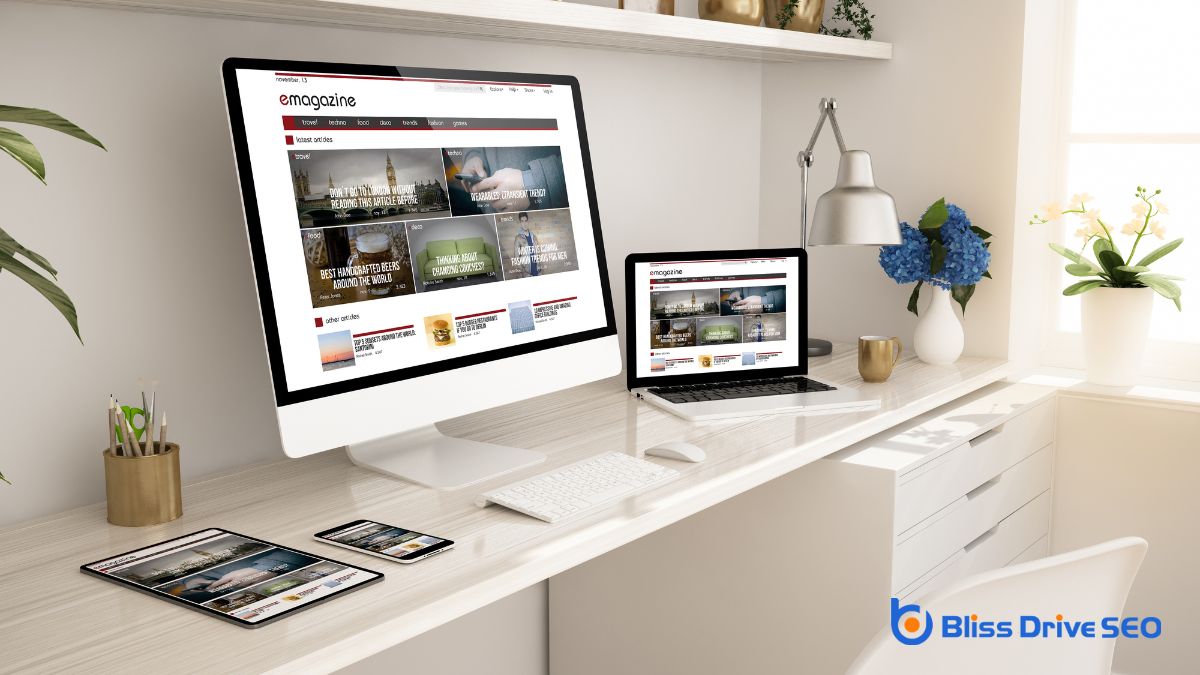
When it comes to conversion rates, website design plays a pivotal role. You mightn't realize it, but every element on your site communicates something to your visitors. A clean, visually appealing design can make all the difference.
First impressions matter, and your site's look can either draw people in or drive them away. It's essential to use a consistent color scheme and readable fonts. Make certain your layout is intuitive, guiding visitors effortlessly towards your call to action.
Think about the images you use; they should be relevant and high-quality. Additionally, a clutter-free design reduces distractions, helping users focus on what's important.
Don't overlook mobile optimization—responsive design guarantees your site looks great on any device, maintaining user interest and boosting conversions.
To boost your conversion rate, focus on enhancing user experience by ensuring your website is easy to navigate.
Prioritize load time optimization to keep visitors engaged, and don't overlook the importance of mobile responsiveness.
Traversing a website should feel like a seamless journey, inviting users to explore without frustration.
If visitors struggle to find what they need, they'll likely exit, affecting your conversion rate. Ease of navigation directly influences user satisfaction, and here's why:
Although often overlooked, load time optimization plays an essential role in enhancing user experience and boosting conversion rates. When your website loads quickly, visitors are more likely to stay, explore, and eventually convert.
Slow load times frustrate users, leading them to abandon your site for faster options. To optimize load time, start by compressing images and minimizing file sizes. Use browser caching to store elements locally, reducing the need for frequent downloads.
Consider using a Content Delivery Network (CDN) to distribute content closer to users geographically. Every second counts, as even slight delays can impact user perception and satisfaction.
In today's digital landscape, ensuring your website is mobile-responsive isn't just a nice-to-have—it's a necessity. If your site doesn't adapt well to mobile devices, you risk losing potential conversions. Here's why:
Adapting your site to be mobile-responsive involves flexible layouts, scalable images, and easy navigation.
When users can effortlessly interact with your site on any device, they're more likely to convert.
Don't let a poor mobile experience be the barrier to your success—prioritize responsiveness today.
When you're aiming to boost your conversion rate, content relevance plays an essential role.
Make certain your content aligns with your target audience's needs and clearly communicates your value proposition.
Consistent messaging will guarantee your audience understands and trusts your brand.
Understanding your target audience is essential for ensuring content relevance, a major factor in boosting conversion rates.
When you align your content with your audience's needs, desires, and pain points, you're more likely to engage them and encourage action.
Here's how you can achieve this:
While clarity in your value proposition can greatly enhance conversion rates, it requires more than just stating what you offer. You need to clearly communicate why your product or service is the best choice for your audience.
Start by identifying the unique benefits you provide and how they solve your customers' problems. It's essential to articulate this in a way that's easily understandable and resonates deeply with their needs.
Think about how your offering stands out from competitors. What makes it special? Use straightforward language to highlight these aspects.
Avoid jargon or overly complex explanations that might confuse or alienate potential customers. When your audience immediately grasps the value you bring, they're more likely to engage and convert, boosting your conversion rate considerably.
A clear value proposition sets the foundation for effective communication, but maintaining messaging consistency across all channels truly enhances conversion rates.
When your message aligns, customers feel confident in your brand. Here's why consistency matters:
Make sure your emails, social media, and website convey the same core message to drive conversions effectively.
To boost your conversion rate, effective marketing strategies are essential. Start by identifying your target audience and tailoring your content to their needs and preferences. Use data analytics to understand what works and what doesn't. A/B testing can help refine your approach, ensuring that your marketing efforts resonate with potential customers.
Leverage multiple channels—social media, email campaigns, and search engine marketing—to maximize reach and engagement. Consistency across these platforms builds trust and reinforces your brand message.
Don't underestimate the power of personalization; tailor your communication to make your audience feel valued.
Keep an eye on your competitors to stay ahead. Analyze their strategies and adapt what works for your brand.
Understanding consumer behavior is essential for improving your conversion rate. By diving into what motivates consumers, you can tailor your strategies to meet their needs.
Here are three key aspects to evaluate:

Technological advancements revolutionize the way you connect with consumers and enhance your conversion rate. By leveraging tools like AI-driven analytics, you can gain deeper insights into customer preferences, allowing you to tailor offerings more precisely.
Personalization becomes seamless as automation helps deliver targeted content, boosting engagement and conversions.
Embrace mobile technology to guarantee your website is optimized for all devices, as a responsive design can greatly improve user experience.
Don't underestimate the power of chatbots, providing instant assistance and improving customer satisfaction. Additionally, integrating secure payment gateways builds trust and encourages purchases.
As technology evolves, staying updated guarantees you utilize the latest innovations to your advantage, making your conversion strategies more effective and efficient.
Aim to adapt and incorporate these advancements to maximize results.
In boosting your conversion rate, focus on a user-friendly website design with fast loading times and intuitive navigation. Make certain your content is relevant and tailored to your audience, and don't forget clear calls to action. Build trust with secure payment options and consistent messaging. Stay updated on marketing strategies and technological advancements to keep up with consumer behavior. By addressing these elements, you'll create a seamless and engaging experience that encourages visitors to convert.
You're probably wondering how to pinpoint the best conversion rate for your business. It all starts with understanding your current performance metrics and setting realistic goals that align with your audience's expectations. You might think it's all about tweaking your website, but there's more to it than that. Have you considered how user experience and marketing strategies play a role? By utilizing analytical tools and engaging in continuous improvement, you can navigate this complex landscape. But what specific steps should you take to begin this journey? Let's explore the nuances that can transform your conversion rates.
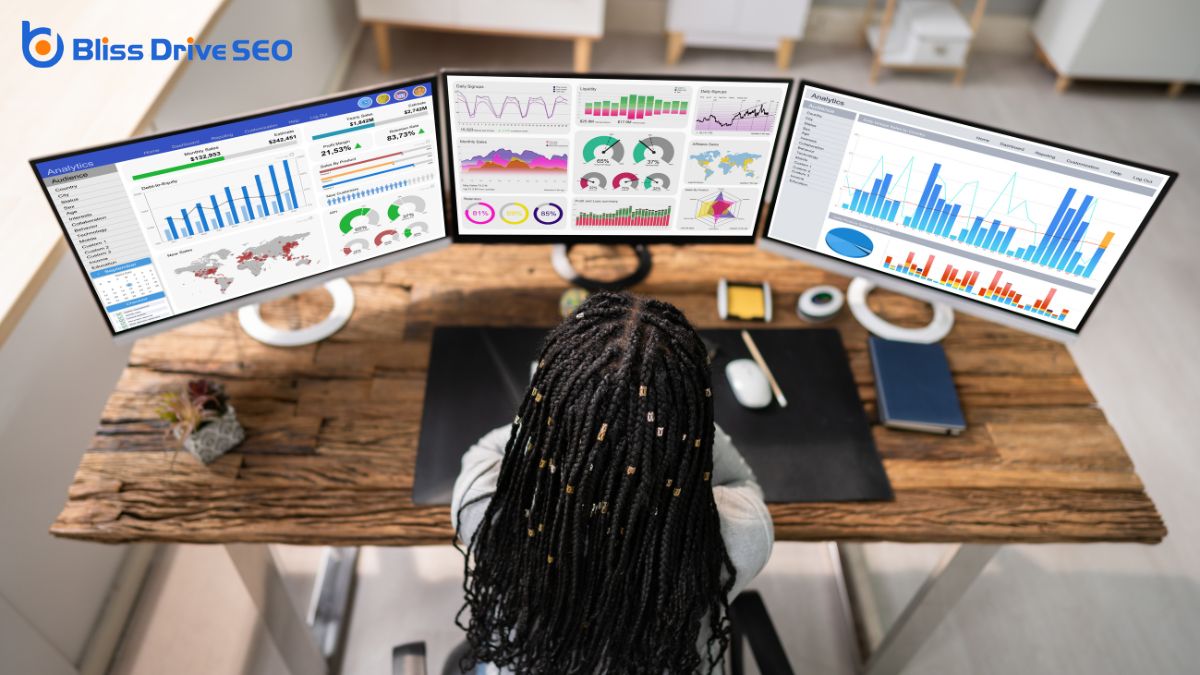
Understanding conversion rates is essential for optimizing your marketing efforts and maximizing profits. By focusing on how well your website turns visitors into customers, you can make informed decisions that enhance your strategies.
A conversion rate is simply the percentage of visitors who complete a desired action, like making a purchase or signing up for a newsletter. To calculate it, divide the number of conversions by the total number of visitors, then multiply by 100. A higher conversion rate means your marketing strategies are effective in persuading visitors.
Keep in mind not all industries or campaigns should have the same conversion targets. Tailor your approach based on your unique business goals and audience behavior to release your marketing potential.
To boost your conversion rate, start by evaluating where your traffic is coming from and how it's performing.
Next, pinpoint any bottlenecks in your conversion process that slow down potential customers.
Finally, assess the effectiveness of your landing pages to guarantee they're engaging and aligned with user expectations.
How can you truly optimize your conversion rates without first evaluating your traffic sources? Understanding where your visitors come from is essential.
Different sources, such as social media, organic search, or paid ads, can bring varied audiences with unique behaviors. You need to assess which channels drive the most engaged traffic and which ones fall short.
Use analytics tools to explore metrics like bounce rate, session duration, and pages per session for each source. This data helps you see patterns and figure out which traffic sources are worth investing more time and resources into.
When you're aiming to boost conversion rates, identifying conversion bottlenecks is essential.
Start by examining your user journey. Look for points where visitors drop off or hesitate. Use analytics tools to pinpoint these stages, such as high exit rates on specific pages. This data will help you understand where potential customers lose interest or face obstacles.
Consider engagement metrics like time on page and bounce rates to gain insights into user behavior. Pay attention to feedback from customers, reviews, or surveys, which can highlight pain points in their experience.
Don't overlook technical issues such as slow page loads or broken links. These bottlenecks can frustrate users and hinder conversions.
Although landing pages are critical to conversion success, their effectiveness often goes unexamined. To truly understand their impact, start by analyzing key metrics like bounce rate and time on page.
A high bounce rate might indicate that visitors aren't finding what they expect, while a short time on the page suggests your content isn't engaging enough. Explore heatmaps to see where users click most and understand their journey.
Are they scrolling or leaving too soon? A/B testing different elements, like headlines or call-to-action buttons, can reveal what drives engagement.
Don't forget mobile responsiveness; make certain your page looks great on all devices. Regularly reviewing these aspects will help you refine your landing pages, ultimately boosting your conversion rates.
Establishing realistic goals is essential to boosting your conversion rate, as it provides a clear roadmap and keeps your efforts focused. Start by analyzing your current metrics to understand what's achievable.
Don't aim for unrealistic numbers right away; incremental improvements often lead to sustainable success. Break down larger goals into smaller, manageable tasks that align with your overall strategy. This approach makes progress measurable and less overwhelming.
Consider using the SMART framework—Specific, Measurable, Achievable, Relevant, and Time-bound—to set goals. For example, instead of saying, "I want more sales," specify the percentage increase you're targeting over a set period.
Regularly review and adjust your goals based on performance data. This guarantees they remain relevant and aligned with your evolving business landscape, keeping you on track.
To identify your target audience effectively, start by analyzing demographic insights like age, location, and income levels.
Next, pay attention to behavioral patterns to see what motivates your audience's actions.
Finally, use psychographic profiling techniques to understand their values, interests, and lifestyles, which will help tailor your approach.
Understanding your target audience is essential for optimizing your conversion rates. To truly connect with potential customers, immerse yourself in demographic insights analysis.
Start by gathering data on age, gender, income, education, and location. This information helps you paint a clear picture of who your audience is and what they value. Use tools like Google Analytics or social media insights to collect this data efficiently.
Next, analyze the data to identify patterns. Are most of your customers young professionals or retirees? Do they reside in urban areas or rural settings?
These insights will guide your marketing strategies, ensuring they're tailored to resonate with the right people. Remember, the more specific your understanding, the more effectively you can engage and convert your audience.
When you plunge into behavioral pattern identification, you'll uncover how your audience interacts with your brand. It's crucial to observe the actions they take on your website, social media, and other platforms. Track metrics like click-through rates, time spent on pages, and navigation paths.
These insights help you understand what captures their attention and what doesn't. Look for trends in how they engage with content and identify any common behaviors or preferences.
Analyze purchasing habits and abandoned carts to see what might be causing friction. By pinpointing these behaviors, you can tailor your strategies to better meet their needs and increase conversions.
Understanding these patterns allows you to create a more personalized experience, ultimately guiding your audience to become loyal customers.
After exploring how your audience behaves, it's time to uncover the 'why' behind those actions through psychographic profiling techniques.
By understanding your audience's values, interests, and lifestyles, you gain insight into their motivations. Start by conducting surveys or interviews to gather qualitative data, revealing what truly matters to them.
Social media analysis can also uncover preferences and attitudes. Segment your audience based on shared characteristics like hobbies or beliefs. This helps you tailor your messaging to resonate deeply with each group.
Remember, it's about connecting on an emotional level. Use this information to craft personalized content that speaks directly to their desires and concerns.
Ultimately, understanding the 'why' empowers you to make informed decisions that boost your conversion rates effectively.
To truly enhance the user experience on your website, start by focusing on intuitive design and seamless navigation. Make certain your site is easy to use, with clear labels and paths that guide visitors naturally.
A clutter-free layout reduces frustration and keeps users engaged. Don't forget mobile responsiveness; many users browse on their phones. Quick loading speeds are essential, too—nobody likes waiting.
Listen to feedback. User surveys and session recordings can highlight pain points. Address these issues promptly.
Simplify forms, reduce steps, and eliminate unnecessary fields to make conversions smoother. Personalization can also enrich the user experience. Tailor content based on user behavior to make them feel valued.
When you prioritize user needs, you'll likely see improved satisfaction and higher conversion rates.
How do you know if your marketing strategies are truly effective?
Start by testing them. Create variations of your campaigns to see which resonates best with your audience. A/B testing is your go-to method.
Change one element at a time—like a headline or call-to-action—and compare results.
This way, you'll understand what drives engagement and conversions.

Once you've tested your marketing strategies, it's time to harness the power of analytical tools to make informed decisions. Start by using tools like Google Analytics to track website performance. You'll gain insights into visitor behavior, bounce rates, and conversion paths.
Explore heatmaps to visualize where visitors click, helping you understand which elements draw attention. Use A/B testing tools to compare variations and identify what resonates best with your audience.
Don't overlook social media analytics, as they reveal engagement and referral traffic. Analyze email marketing metrics to see open rates and click-throughs.
Each tool offers valuable data, guiding you to optimize your approach. By leveraging these insights, you can refine your strategies, ensuring you maximize your conversion rate effectively.
Even after implementing analytical insights, the journey to optimizing conversion rates doesn't end there.
Continuous improvement methods are essential. Start by fostering a culture that embraces constant change. Regularly test and iterate on elements of your marketing and sales funnel. Gather feedback from users to understand their experiences better. Don't forget to monitor industry trends and adapt accordingly.
Here's how you can start:
To find the best conversion rate, immerse yourself in your current metrics and set realistic goals that align with your business objectives. Understand your target audience and optimize their experience on your site. Test different marketing strategies using A/B testing to see what works best. Leverage analytical tools like Google Analytics to gain insights and track performance. Keep refining your approach based on data, ensuring continuous improvement and alignment with audience expectations for the best results.
When you're looking to boost your website's effectiveness, understanding the seven conversion factors can be a game-changer. These elements aren't just buzzwords; they directly influence how visitors interact and decide on your site. Imagine having the ability to create compelling calls to action or design a seamless user experience that keeps people engaged. Ever wondered how trust and credibility play a role or why mobile optimization is non-negotiable? Each factor, from loading speed to clear value propositions, holds the potential to transform mere visits into meaningful actions. Curious about how these elements work together to enhance conversions?
Compelling calls-to-action (CTAs) are essential for converting visitors into leads or customers. When crafting CTAs, focus on creating urgency and clarity. Use action-oriented language that guides users towards a specific outcome. Words like "Get," "Discover," or "Start" prompt immediate responses.
Don't forget to highlight the benefits; make sure users understand what they gain from taking action. Place your CTAs strategically where they naturally fit within your content, and make sure they stand out visually.
Test different versions to see which performs best, as slight changes in wording or design can greatly impact conversion rates. Always consider your audience's perspective and tailor CTAs to their needs and motivations.

When it comes to user experience design, focusing on the user's journey is crucial. You need to understand how users interact with your site and what they're looking for.
Simplify navigation so visitors can find what they need quickly and effortlessly. Use intuitive layouts and guarantee your content is accessible across all devices.
Pay attention to visual hierarchies, guiding users' eyes to key sections. Don't forget about feedback; it's essential for keeping users informed about their actions—like submitting a form or completing a purchase.
Foster trust by maintaining a consistent design that aligns with your brand.
Although often overlooked, website loading speed is a critical factor in user experience and conversion rates. When your site loads quickly, visitors are more likely to stay, explore, and ultimately convert.
Slow loading times frustrate users, leading them to abandon your site and seek faster alternatives. You need to guarantee that your website is optimized for speed by using compressed images, efficient coding, and reliable hosting services.
Tools like Google PageSpeed Insights can help you identify areas for improvement. Remember, every second counts. Studies show that even a one-second delay can decrease conversions by up to 7%.
While browsing a site, you might notice logos of recognizable brands or glowing reviews from satisfied customers. These elements, known as social proof and testimonials, are powerful tools that influence your decision-making. They provide reassurance and validation, making it easier for you to trust a product or service.
Here's how they work:
Using these elements wisely can encourage conversions.
To boost trust and credibility, focus on building strong relationships with your audience.
Always guarantee transparency in your communications, as openness fosters confidence.
Establish your expert authority by consistently sharing valuable insights and knowledge in your field.
Building strong relationships is essential for establishing trust and credibility, which are the cornerstones of any successful interaction.
When you prioritize genuine connections, you foster a sense of loyalty that becomes invaluable.
Here's how you can cultivate these relationships:
Amidst the complexities of modern interactions, ensuring transparency is crucial for maintaining trust and credibility. You need to be open about processes and decisions. When you communicate clearly, without hidden motives, you build a foundation of trust.
It's important to share information promptly and honestly, allowing others to feel secure in their interactions with you. Transparency means acknowledging mistakes and providing truthful answers, even when it's uncomfortable. People appreciate honesty and are more likely to engage positively when they know you're genuine.
Trust isn't built overnight but through consistent, transparent actions. Also, use straightforward language—avoid jargon that could confuse or alienate.
Ultimately, when others see your commitment to transparency, they're more likely to trust and support your endeavors.
While many factors contribute to trust and credibility, establishing expert authority is a key component. When you position yourself as an expert, you build a foundation of trust that encourages others to engage with you.
Here's how you can establish that authority:
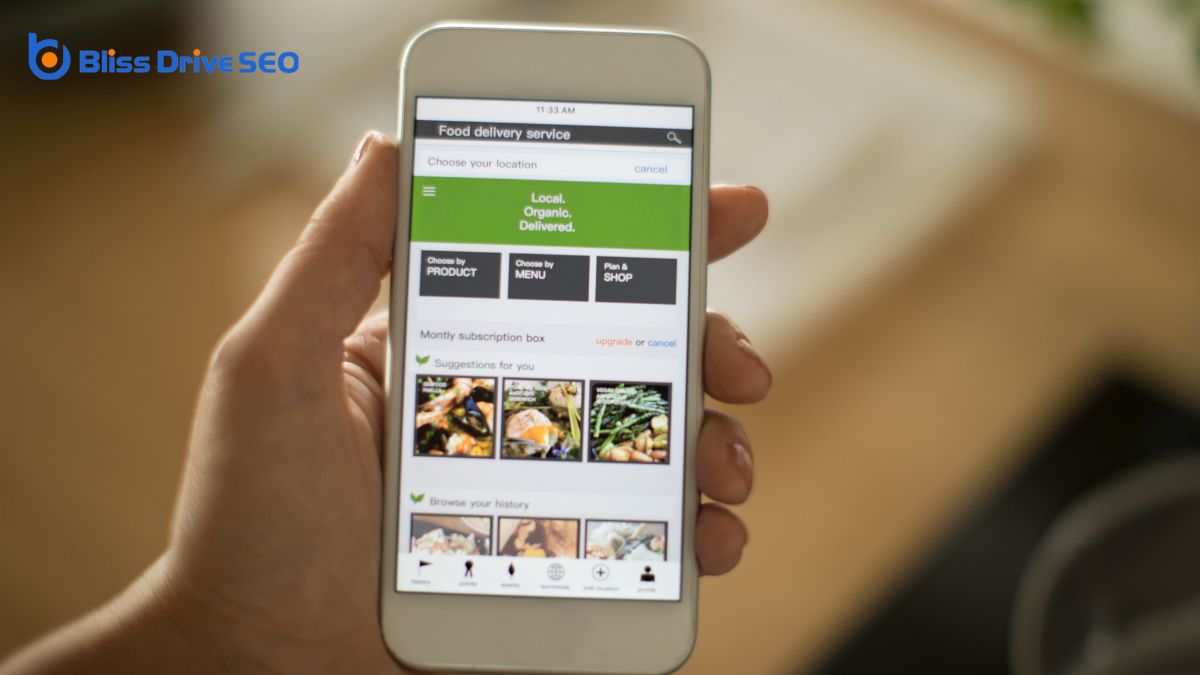
In today's fast-paced digital world, guaranteeing your website is optimized for mobile devices is essential for enhancing user experience and boosting conversion rates.
Mobile users expect fast load times and seamless navigation. If your site isn't mobile-friendly, users might leave before engaging.
Start by adopting a responsive design that adjusts to various screen sizes. Prioritize speed by compressing images and minimizing heavy scripts.
Simplify navigation—make buttons large enough for easy tapping and guarantee links are easy to find. Test your site on different devices to catch any issues.
Remember, a smooth mobile experience can make the difference between a sale and a lost customer.
To capture your audience's attention and guide them toward conversion, a clear value proposition is essential. It differentiates your offering from competitors, making it indispensable for your marketing strategy.
A compelling value proposition explains why someone should choose you over others. Here's how you can craft yours effectively:
To boost your website's conversion rates, focus on these key elements: create compelling calls-to-action that instill urgency and guarantee a seamless user experience with intuitive navigation. Prioritize fast loading speeds to keep visitors engaged and leverage social proof and testimonials to build credibility. Establish trust with transparent communication and showcase a clear value proposition. Don't forget mobile optimization—it's vital for reaching users on the go. By addressing these factors, you'll greatly enhance your site's overall success.
When you're maneuvering through the digital marketing landscape, understanding the distinction between SEO and conversion optimization is essential. SEO, or search engine optimization, boosts your site's visibility by targeting specific keywords and securing backlinks. It's all about attracting the right audience. On the flip side, conversion optimization is about turning that traffic into loyal customers by enhancing user experience and guiding them to take desired actions. But how do these strategies interact, and can they truly coexist to drive success? Let's explore how these elements intertwine in the digital domain.

Understanding SEO fundamentals is vital for anyone looking to improve their website's visibility. You need to focus on optimizing your site's structure, content, and keywords to rank higher in search engine results.
Start by conducting keyword research to understand what your audience is searching for. Incorporate these keywords naturally within your content to make it more relevant.
Next, make sure that your website is technically sound. Optimize page load speeds and make your site mobile-friendly to enhance user experience.
Don't forget to craft compelling meta titles and descriptions to improve click-through rates. Quality backlinks from reputable sites also play an important role in boosting your site's authority.
While SEO focuses on attracting visitors to your site, conversion optimization assures those visitors take meaningful actions once they arrive.
By refining the user experience, you aim to convert casual visitors into engaged customers. Here are key elements to ponder:
Focus on these elements to enhance conversions effectively.
Though both SEO and conversion optimization are essential for a successful online presence, they serve distinct purposes and are measured by different metrics.
SEO focuses on improving your site's visibility in search engine results, aiming to increase organic traffic. You'll track metrics like keyword rankings, organic traffic, and click-through rates.
On the other hand, conversion optimization concentrates on enhancing your website's ability to turn visitors into customers or leads. Here, you'll measure conversion rates, bounce rates, and user engagement.
Understanding these goals helps you allocate resources effectively. With SEO, your objective is to attract visitors, while conversion optimization guarantees those visitors take desired actions.
When SEO and conversion optimization work in tandem, they create a powerful synergy that drives both traffic and sales. You can't just focus on getting visitors; you need to convert them, too.
Here's how they mesh:
Together, they maximize your site's potential.

To implement a balanced strategy, start by aligning your SEO and conversion optimization goals. Recognize that driving traffic and converting that traffic are separate yet interconnected objectives.
Focus on targeting the right audience with relevant keywords, ensuring they match your value proposition. Use analytics tools to track both search performance and user behavior on your site. This will help you pinpoint areas for improvement and maintain harmony between attracting visitors and converting them.
Next, create content that satisfies search intent and encourages action. A well-structured site with clear calls-to-action (CTAs) enhances user experience and boosts conversion rates.
Regularly test different strategies using A/B testing to find what resonates best with your audience. Remember, a cohesive approach balances visibility and engagement for excellent results.
In digital marketing, understanding the distinction between SEO and conversion optimization is essential for success. SEO's all about driving the right traffic to your site, while conversion optimization focuses on turning that traffic into loyal customers. When you combine these strategies, you create a powerful synergy that enhances your online presence and profitability. So, don't neglect one for the other; integrate both to achieve a balanced approach that maximizes your site's potential.
To learn Conversion Rate Optimization, you need to start by mastering the basics—understanding conversion rates, bounce rates, and how they impact your marketing goals. Use tools like Google Analytics to analyze user behavior, and don't shy away from A/B testing to see what resonates with your audience. Gathering customer feedback through surveys can inform your approach, but how do you turn this data into actionable insights? Staying abreast of industry trends and strategies is essential, but where should you focus your efforts to truly optimize conversions in an ever-evolving digital landscape?
When you're diving into Conversion Rate Optimization (CRO), understanding the basics is essential.
You'll find that CRO focuses on improving the percentage of visitors who complete a desired action on your website, such as making a purchase or signing up for a newsletter.
It's about enhancing user experience and maximizing your site's effectiveness. Start by analyzing your website's current performance to identify areas that might need improvement.
Think about what your audience values and how you can address their needs better. Test different elements like headlines, calls-to-action, and layouts to see what resonates most with visitors.

How do you know which metrics truly matter for Conversion Rate Optimization? Start by focusing on metrics that directly impact your goals.
Conversion Rate itself is essential; it shows the percentage of visitors completing desired actions. Keep an eye on Bounce Rate, indicating how many users leave without interacting further.
Average Session Duration helps you understand user engagement levels. Pay attention to the Click-Through Rate (CTR) for insights into how well your calls-to-action perform.
Don't overlook the Cart Abandonment Rate if you're in e-commerce, as it reveals potential lost sales. Each metric offers valuable insight into user behavior and site performance.
Understanding user behavior is essential for effective Conversion Rate Optimization. You need to dive deep into how users interact with your site.
Start by utilizing tools like Google Analytics to track their journey. Identify which pages they visit frequently and where they drop off. Look for patterns in their navigation and pinpoint any areas that cause friction.
Heatmaps are also valuable as they visually display where users click and scroll on your site. Pay attention to user feedback and session recordings to understand their motivations and frustrations.
When conducting A/B testing, focus on designing effective test variations that clearly highlight differences in user experience.
Analyze the results carefully to understand which version performs better and why.
Once you've identified the winning strategy, implement it to enhance your conversion rate.
Although it might seem intimidating at first, designing effective test variations is a critical step in conducting successful A/B testing.
Start by identifying the elements you want to test—headlines, images, call-to-action buttons, or even layout changes. Clearly define the hypothesis for each variation; this guides your test and helps guarantee it's grounded in logic, not guesswork.
Keep your changes simple and focused. Testing too many elements at once can cloud the results and make it difficult to pinpoint what truly impacts user behavior.
Use tools like visual editors to create your variations without needing deep technical skills.
Before diving into the analysis of your A/B test results, verify that your data collection was accurate and thorough. Confirm your sample size is sufficient to yield meaningful insights.
Once you've confirmed the integrity of your data, examine the performance metrics of each variation. Focus on key indicators like conversion rates, bounce rates, and engagement levels.
Use statistical significance to determine if the observed differences aren't due to chance. Look for patterns and trends that highlight which version performed better.
Remember, subtle changes can sometimes lead to significant improvements. Be objective and rely on data-driven conclusions rather than assumptions.
Kickstart your conversion optimization journey by implementing winning strategies through effective A/B testing. Start by identifying elements on your website that could be improved, such as headlines, images, or call-to-action buttons.
Create two versions: the original (A) and a variation (B) with a single change. Make sure you have a clear goal, like increasing click-through rates or sign-ups.
Next, randomly split your audience into two groups, showing each one version. Monitor their interactions to gather data. Keep your test running long enough to gather significant results, avoiding hasty conclusions.
Once complete, analyze which version performed better. Apply the winning strategy across your site. Remember, A/B testing is an ongoing process, so keep iterating to continually enhance your site's performance.
To optimize your landing pages, focus on making your call-to-action (CTA) clear and compelling.
Confirm that your visual design elements guide visitors smoothly toward your CTA without distractions.
How often have you encountered a landing page where the call-to-action (CTA) left you confused or uninterested? You're not alone.
A clear, compelling CTA is essential for guiding visitors toward conversion. To improve CTA clarity, consider these steps:
Implement these strategies, and watch your conversion rates soar!
When optimizing landing pages, enhancing visual design elements plays an essential role in capturing your audience's attention and guiding them toward conversion.
Start with a clean, uncluttered layout that highlights key information. Use colors strategically to evoke emotions and direct focus. Confirm your text is readable with clear fonts and proper spacing. High-quality images should support your message, not distract from it.
Visual hierarchy is critical — guide your visitors' eyes with size and contrast. Use buttons and icons to emphasize calls to action, making them stand out.
Consistency in design builds trust, so align design elements with your brand identity. Remember, simplicity is key; too many elements can overwhelm visitors.
Test different designs to see what resonates best with your audience, honing the perfect balance.
Even if your strategy is sound, the right tools can considerably enhance your conversion rate optimization (CRO) efforts.
Leveraging specific tools helps you understand user behavior, test variations, and refine processes. To make the most of CRO tools, consider these essentials:
These tools simplify analysis, helping you enhance your site's performance.
Analyzing user behavior and testing variations with CRO tools lays the foundation for your next step—crafting compelling calls to action (CTAs). Your CTAs should grab attention and encourage users to take the next step.
Start by using action-oriented language like "Get," "Discover," or "Join." Clarity is essential; make sure users know exactly what they'll get by clicking. Personalization can increase engagement, so tailor CTAs to your audience's needs and interests.
Consider color and placement; a standout button or link can drive more clicks. Test different versions to see what resonates.
Keep it concise—users should understand the action without overthinking. A well-crafted CTA is clear, direct, and irresistible, leading to higher conversions and satisfied site visitors.
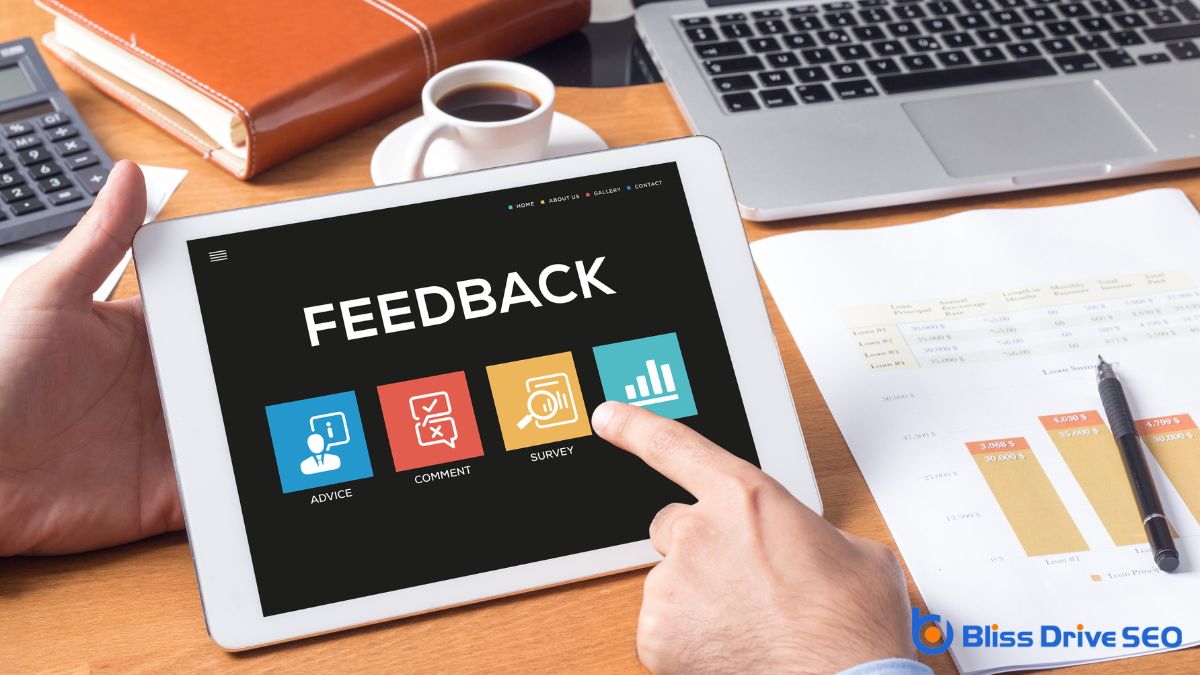
Listening to your customers can transform your approach to conversion rate optimization. By tapping into their feedback, you gain invaluable insights into what's working and what's not.
To effectively utilize this feedback, consider the following:
Using customer feedback guarantees you're making informed changes that resonate with your audience, ultimately boosting your conversion rates.
Staying ahead in conversion rate optimization means you must keep up with ever-evolving trends. To do this effectively, immerse yourself in industry news and updates. Follow thought leaders and experts on social media who share insights and breakthroughs.
Subscribe to reputable blogs and listen to podcasts focused on conversion strategies. These resources keep you informed about new tools, techniques, and user behavior shifts.
Don't forget to join online communities and forums where professionals exchange ideas and solutions. Engaging in discussions can spark fresh ideas or reveal overlooked details.
Attend webinars and conferences to learn from top experts and network with others in the field. By staying informed, you'll adapt quickly to changes, ensuring your optimization strategies remain effective and relevant.
To master Conversion Rate Optimization, focus on grasping the basics and identifying critical metrics like conversion and bounce rates. Explore user behavior with analytics tools, and don't hesitate to conduct A/B tests to refine your strategies. Optimize your landing pages and craft compelling calls to action to boost engagement. Gather and utilize customer feedback to guide improvements. Finally, stay informed by following industry trends and engaging with online communities. Your proactive efforts will drive significant results.
Imagine you're running a website, and you're getting plenty of visitors, but they're not taking the actions you want, like signing up or making a purchase. This is where a conversion optimizer comes into play. It helps you understand how users interact with your site and identifies barriers that prevent them from converting. By using techniques such as A/B testing and personalization, you can enhance user experience and boost conversion rates. But how exactly does a conversion optimizer achieve these outcomes, and what strategies can you adopt to maximize its potential? Explore this further to find out.

Understanding conversion optimization is essential for enhancing the effectiveness of any digital marketing strategy. It's about making sure your website or landing page turns visitors into customers.
You want to focus on their journey, ensuring every step they take leads them closer to completing a desired action, like making a purchase or signing up for a newsletter.
Think of it as a puzzle. Each piece, whether it's the call-to-action or the content layout, must fit perfectly. Your goal is to eliminate obstacles that might prevent conversion.
Analyze data to understand user behavior, then tweak elements like headlines, images, and forms to improve results.
When diving into the key features of conversion optimizers, recognize that these tools are designed to enhance your website's ability to turn visitors into customers.
You'll find features like A/B testing, which allows you to compare different versions of your pages to see what works best.
Heatmaps provide visual insights into how users interact with your site, identifying areas for improvement.
Personalization tools tailor content based on visitor behavior, making their experience more relevant.
Analytics dashboards give you real-time data, helping you make informed decisions quickly.
These tools often integrate seamlessly with existing platforms, ensuring a smooth workflow.
Harnessing the power of conversion optimizers offers several benefits for businesses looking to enhance their online performance. First, you can expect increased sales by effectively turning more visitors into paying customers. This boost in conversions directly impacts your bottom line.
Additionally, conversion optimizers help streamline your marketing efforts, ensuring you allocate resources to strategies that yield the best results. You'll save money by avoiding ineffective tactics.
Moreover, understanding what drives your audience allows you to create personalized experiences, fostering customer loyalty and long-term relationships.
With these tools, you gain valuable insights into which elements of your site work and which need improvement. Ultimately, this leads to a more efficient, data-driven approach that can greatly elevate your business's online success.
To capitalize on the benefits of conversion optimizers, it's crucial to thoroughly analyze visitor behavior. When you understand how visitors interact with your site, you can identify patterns and pinpoint areas for improvement.
Start by examining metrics like time spent on pages, click-through rates, and bounce rates. These insights reveal what captures interest and where potential customers drop off.
You should also use tools like heatmaps to visualize user interactions and track their journey across your site. By doing so, you'll uncover which elements engage visitors and which might deter them.
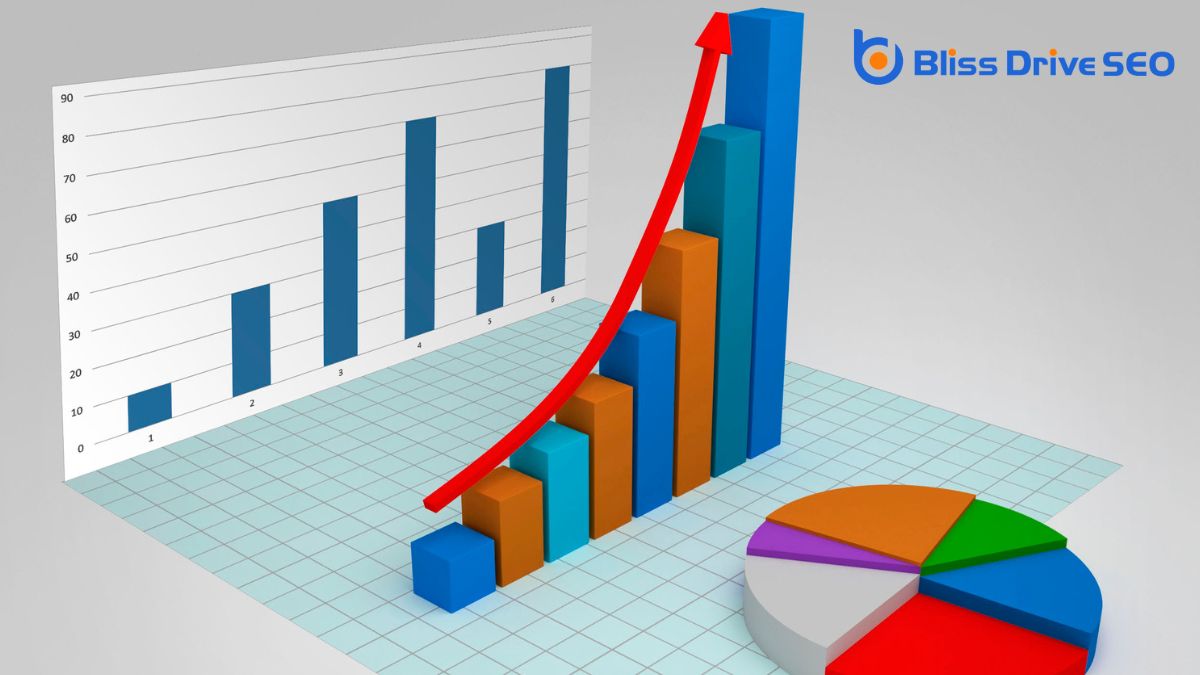
To boost your conversion rates, start by analyzing user behavior to understand what drives their decisions.
Implement A/B testing strategies to find what resonates best with your audience.
Don't forget to optimize your call-to-actions, making them clear and compelling to guide your users toward conversion.
Understanding how users interact with your website is essential for boosting conversion rates. You need to explore user behavior analytics to uncover patterns and insights.
By examining which pages visitors linger on and where they drop off, you can identify potential roadblocks in your sales funnel. Tools like heatmaps and session recordings reveal how users navigate your site, showing you what grabs their attention or causes frustration.
Pay attention to metrics like bounce rates and average session duration, as they offer clues about user engagement. Use this data to refine your website's design, layout, and content.
When you understand your audience's preferences and pain points, you can make informed decisions that enhance their experience and ultimately drive more conversions.
Have you ever wondered how a simple tweak to your website could skyrocket your conversion rates? A/B testing is your secret weapon. It involves comparing two versions of a webpage to see which one performs better.
You'll start by changing one element—like a headline, image, or button color—and present both versions to different segments of your audience. This strategy helps you understand what resonates with your visitors.
To get the most out of A/B testing, focus on one variable at a time. This clarity guarantees you know exactly what's driving the change.
Keep the test running long enough for reliable data, and make certain your sample size is sufficient. By embracing A/B testing, you'll make data-driven decisions that boost conversions.
Why do some call-to-actions (CTAs) seem to effortlessly draw you in while others fall flat? It all comes down to clarity, relevance, and urgency. A powerful CTA communicates exactly what you'll gain by clicking. Use action-oriented language like "Get Started" or "Download Now" to create a sense of immediacy.
Make sure your CTA aligns with your audience's needs and desires. If it doesn't resonate, visitors won't engage.
Visual elements matter, too. A button that stands out, with contrasting colors, naturally grabs attention. Keep it simple and direct—too much text can overwhelm and confuse.
Test different phrases and designs to see what resonates best. By optimizing CTAs, you not only enhance user experience but also notably increase conversion rates.
To boost your conversion rates, you'll want to explore A/B testing strategies and heatmap analysis tools.
A/B testing lets you compare different versions of your web pages to see what works best for your audience.
Meanwhile, heatmap tools show you where users click and scroll, revealing insights into user behavior.
Revealing the potential of your website's conversion rates often begins with understanding the power of A/B testing. It's a straightforward yet effective strategy that lets you compare two versions of a webpage to see which performs better.
By testing elements like headlines, images, or call-to-action buttons, you'll gather data-driven insights to optimize your site.
To start, choose a single variable to test and create two versions: A (control) and B (variant). Use tools like Google Optimize or Optimizely to track user interactions and measure success.
Run the test long enough to guarantee statistical significance. Remember, it's not about guessing what works; it's about using real data to make informed decisions.
Regular A/B testing can lead to continuous improvement and increased conversions.
While A/B testing provides a direct comparison between two versions of a webpage, heatmap analysis tools offer a visual representation of user behavior, showcasing where visitors click, scroll, or linger on your site.
By using these tools, you can quickly identify which parts of your webpage capture attention and which areas might be ignored. This insight helps you understand user preferences and informs decisions to enhance user experience.
Implement heatmaps to see if your call-to-action buttons are getting the clicks they deserve or if users struggle to find important information.
Tools like Hotjar or Crazy Egg make it easy to gather this data. By interpreting these visual cues, you can optimize your webpage layout effectively, ultimately improving conversion rates and achieving your online goals.
In using a conversion optimizer, you reveal the potential to transform your digital marketing strategy. By understanding visitor behavior and leveraging tools like A/B testing and heatmaps, you can identify and eliminate barriers to conversions. This not only enhances user experience but also boosts conversion rates, maximizes your existing traffic, and reduces customer acquisition costs. Ultimately, you're setting your business up for long-term growth and increased profitability by making the most of every visitor interaction.
When you're exploring ways to enhance your website's performance, conversion optimization becomes a vital focus. Imagine you're running an online store and notice a high cart abandonment rate. By simplifying the checkout process—perhaps by reducing the number of fields or offering more payment choices—you can potentially transform those lost sales into conversions. But how do you guarantee these changes effectively boost your conversion rate? The answer lies in understanding user behavior and implementing strategic A/B testing. Curious about the steps involved and what makes an optimization truly successful? Let's explore the intricacies together.
Conversion optimization is the art and science of transforming visitors into customers by enhancing the effectiveness of your website or landing page. You need to focus on understanding your audience's behavior and motivations.
Start by identifying what attracts visitors and keeps them engaged. Test different elements like headlines, calls-to-action, and images to see what resonates. Always ask, "What's stopping them from converting?"
Gather insights from A/B testing and user feedback to refine your approach. Remember, it's about improving the user experience and removing any barriers that might hinder a purchase or sign-up.

How do you measure success in conversion optimization? You need to define key metrics that reflect your objectives. These metrics, often called Key Performance Indicators (KPIs), provide insight into your site's performance.
Start by focusing on metrics that directly relate to user actions, such as conversion rate, which measures the percentage of visitors completing a desired action. Also, consider metrics like bounce rate, time on site, and average order value, as they offer additional context about user engagement and behavior.
Track user behavior through tools like Google Analytics to gather data on these metrics. Regularly analyzing these metrics helps you understand what's working and what's not.
To effectively optimize your conversions, you need to identify clear conversion goals by defining target actions you want visitors to take.
Whether it's signing up for a newsletter, making a purchase, or filling out a contact form, each action should be measurable.
Once you've set these goals, use key metrics to track progress and make necessary adjustments to improve performance.
Identifying conversion goals is essential for optimizing any website or marketing campaign. To effectively define target actions, you need to specify what you want users to do once they engage with your content. This clarity helps streamline your strategy and measure success.
Consider these steps:
When optimizing for conversions, tracking key metrics is essential to understanding how well you're achieving your goals.
Start by identifying what actions you want visitors to take, like signing up for a newsletter or completing a purchase. These are your conversion goals.
Once you've established these, select metrics that align with them, such as conversion rate, average order value, or bounce rate.
Use tools like Google Analytics to monitor these metrics regularly. This data helps you spot trends, identify bottlenecks, and make informed decisions to improve user experience.
How can you effectively understand what drives your users' actions on your website? You need to explore user behavior analysis. This involves examining how visitors interact with your site.
Here's how you can get started:
A/B testing is a powerful strategy to optimize your website by comparing two or more versions of a page to determine which performs better.
You start by identifying an element to test, like headlines, images, or call-to-action buttons. Create variations, guaranteeing only one change per test to pinpoint what impacts performance. Randomly split your audience, directing half to the original (A) and half to the variation (B).
Focus on metrics that matter, such as conversion rates or click-through rates. Use statistical tools to analyze results and guarantee significance.
When implementing design changes, start by simplifying your site's navigation to guarantee users find what they need effortlessly.
Boost your website's visual appeal with clean, engaging designs that capture attention.
Make sure your call-to-action stands out and clearly guides your visitors toward conversion.
Streamlining your website's navigation structure is crucial for enhancing user experience and boosting conversion rates.
When visitors can easily find what they're looking for, they're more likely to engage and convert. Here's how you can simplify navigation:
To captivate and retain your audience, enhancing the visual appeal of your website is essential. Start by choosing a clean, modern design that reflects your brand's personality.
Use a harmonious color palette and readable fonts to make your content visually pleasing. High-quality images and graphics can also elevate your site's look, making it more engaging.
Guarantee your design is responsive, adapting seamlessly to different devices so users have a consistent experience. White space is your friend; it helps emphasize important elements and prevents your site from looking cluttered.
Consistent design elements across all pages create a cohesive feel. Remember, a visually appealing site not only attracts visitors but encourages them to linger, increasing the chances of conversion.
A visually appealing website sets the stage for effective user interaction, and the next step is to optimize your call-to-action (CTA) elements.
A well-designed CTA can markedly increase conversion rates by guiding users toward desired actions. Here's how you can enhance your CTAs:
Implement these strategies to transform your CTAs into powerful conversion tools.

How do you know if your conversion optimization efforts are truly paying off? Start by setting clear goals—know what success looks like for your business.
Use analytics tools to track key metrics such as conversion rates, bounce rates, and average session durations. Compare these metrics before and after implementing optimization changes to see tangible improvements.
Don't just focus on the numbers; consider user feedback and behavior patterns for a holistic view. Conduct A/B testing to identify which variations work best, and refine your strategies based on these insights.
Regularly review your data to spot trends and make informed decisions. Remember, conversion optimization is an ongoing process. Stay proactive and adapt to guarantee your efforts continue delivering results.
When exploring the domain of conversion optimization, studying case studies can be an invaluable tool. They offer real-world insights into what strategies work and why.
By diving into these narratives, you gain a clearer understanding of successful tactics and potential pitfalls. Here's how you can benefit from analyzing case studies:
You've learned that conversion optimization is about understanding and improving the user experience to boost conversions. By defining clear goals and key metrics, you can effectively analyze user behavior. Use A/B testing to identify what works best and make strategic design changes to enhance the process. Evaluate the results to guarantee they're aligned with your objectives. Finally, draw insights from case studies to refine your approach. With these steps, you'll see increased engagement and sales.
To optimize conversion rates, start by truly understanding your audience through demographic analysis and feedback tools. You'll want to tailor content that resonates with them while enhancing their experience with intuitive navigation and quick loading times. Craft compelling calls-to-action that stand out visually and are strategically placed. Regular A/B testing can reveal which variations work best. Don't forget the power of social proof to build trust. But how do you keep adapting to ever-changing user preferences and market trends? The answer lies in continuous monitoring and iteration—let's explore how that unfolds.
Who exactly are the people visiting your site? To optimize conversion rates, you need to know your audience thoroughly. Start by identifying their demographics—age, gender, location, and income level.
Understand their interests, behaviors, and the problems they're trying to solve. Why are they on your site? Are they looking for specific products or information?
Use tools like surveys, analytics, and feedback forms to gather insights. Listen to their needs and tailor your content accordingly.
When you recognize what drives them, you can create personalized experiences that resonate. Remember, people connect with brands that understand them.

To boost conversion rates, start by identifying where your traffic is coming from.
Measure each stage of your conversion funnel to understand where you're losing potential customers.
Finally, evaluate how effective your content is in engaging and converting visitors.
Understanding where your website visitors come from is essential for optimizing conversion rates. By identifying traffic sources, you can tailor your marketing efforts and enhance user experience.
Start by using tools like Google Analytics to track visitors. You'll find out if they're coming from search engines, social media, referral sites, or direct visits.
Categorize traffic into segments like organic, paid, and referral to understand which channels drive the most engaged users. Look for patterns and trends that could reveal strengths or weaknesses in your strategy.
If a particular source brings quality traffic, consider allocating more resources to it. Conversely, if a source underperforms, reevaluate its relevance. Understanding these dynamics empowers you to make informed decisions to boost conversions.
While traffic sources give you a glimpse of where your visitors originate, the conversion funnel reveals how they interact with your site toward making a purchase or completing a desired action.
By measuring your conversion funnel, you can identify the stages where potential customers drop off. This insight allows you to pinpoint bottlenecks and areas needing improvement.
To do this, track key performance indicators (KPIs) at each funnel stage—awareness, interest, decision, and action. Use analytics tools to gather data on page views, bounce rates, and click-through rates.
Regularly reviewing this data helps you understand user behavior and optimize the flow. Remember, each step in the funnel should guide users smoothly toward the end goal, minimizing friction and maximizing conversion opportunities.
How can you guarantee your content is truly driving conversions? Start by analyzing its current performance.
Explore your analytics to pinpoint what's working and what isn't. Here's how you can evaluate content effectiveness:
Boosting your website speed is essential for optimizing conversion rates because users expect fast-loading pages. Slow sites frustrate visitors, leading them to abandon your page before taking any desired actions.
To improve speed, start by minimizing file sizes. Compress images without sacrificing quality and consolidate CSS files to reduce server requests.
Utilize browser caching so returning users experience faster load times. Implement content delivery networks (CDNs) to distribute site data across multiple servers globally, reducing latency.
Keep an eye on your site's performance using tools like Google PageSpeed Insights, which provides actionable recommendations for improvement. Regularly monitor and update plugins, as outdated ones can bog down your site.
Improving website speed sets the stage for enhancing user experience, a key factor in optimizing conversion rates. When users land on your site, they expect smooth navigation and easy access to the information they need.
Prioritize user-friendly design to keep them engaged. Consider these elements:
Focus on these areas to create a seamless experience that encourages users to stay longer and convert.
Why are calls to action (CTAs) so essential to conversion rates? They guide your audience on what to do next, making the path to conversion clear and direct.
Without a compelling CTA, visitors might feel lost or unsure about the next steps, causing them to leave without taking action.
To craft a compelling CTA, use strong, action-oriented verbs that inspire urgency or curiosity. For instance, instead of "Submit," try "Get Your Free Guide Now."
Make sure your CTA stands out visually by using contrasting colors and strategic placement on your page.
Personalize your CTAs by addressing specific audience needs or desires.
To boost your conversion rates, start by optimizing your landing pages.
Ascertain your page loads quickly, as slow load times can drive potential customers away.
Also, focus on streamlining the user experience so visitors can easily find what they're looking for and take action.
When visitors land on your page, they expect it to load swiftly; a delay of even a few seconds can lead to frustration and higher bounce rates.
Improving your page load speed is essential for keeping them engaged and driving conversions. Here are some practical tips to enhance your page's performance:
After enhancing your page load speed, focus on streamlining the user experience through optimized landing pages.
Start by confirming that your landing page has a clean, intuitive design. Avoid clutter and keep navigation simple, guiding users effortlessly to your call to action.
Your headlines should be clear and compelling, immediately conveying the value you offer. Use concise, persuasive copy that speaks directly to your audience's needs.
Make certain your forms are short and easy to fill out, asking only for essential information. Incorporate visual elements wisely—images and videos should support your message, not distract from it.
Finally, prioritize mobile optimization. A responsive design guarantees that users on any device have a seamless experience, increasing the likelihood of conversion.
Although optimizing conversion rates can seem challenging, leveraging A/B testing is a powerful strategy to make informed decisions. By comparing two versions of a webpage or element, you can identify which one performs better.
This data-driven approach helps you fine-tune your site for maximum impact.
Start by testing small changes, such as:
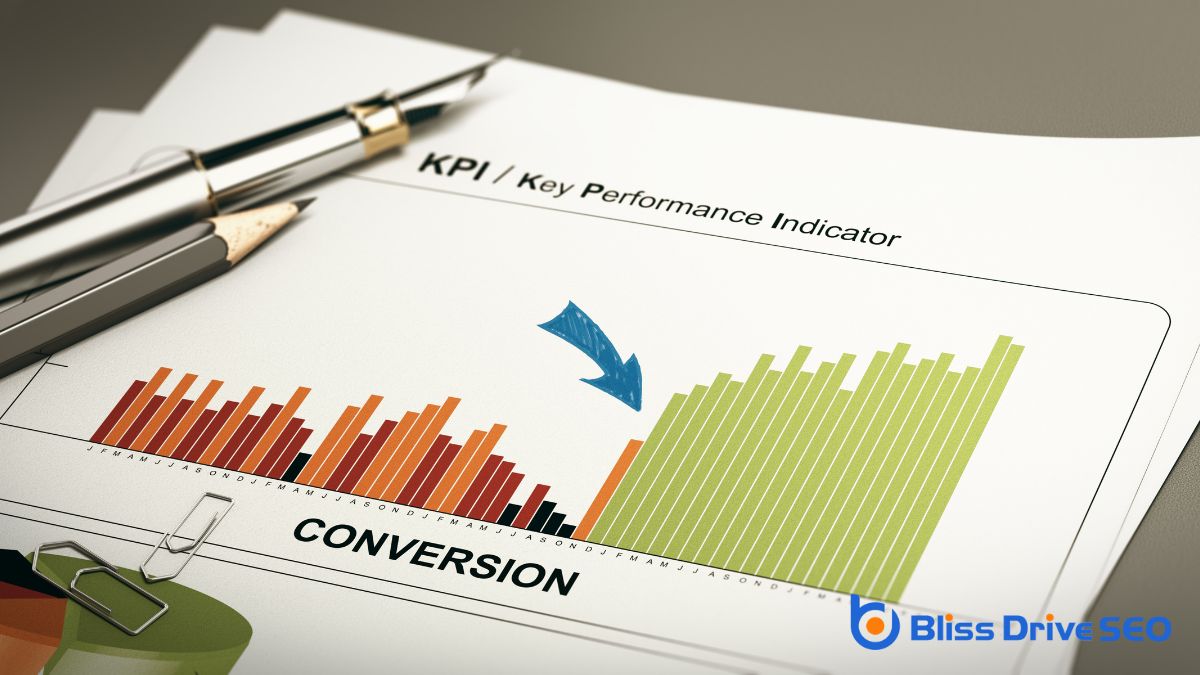
Why is social proof so powerful in optimizing conversion rates? It taps into the basic human instinct to follow others' actions and decisions. When potential customers see that others are satisfied with your product or service, they're more likely to trust and choose you too.
You can leverage this by showcasing testimonials, reviews, or case studies prominently on your website. Additionally, displaying trust badges or logos of well-known clients can further enhance credibility.
Encourage users to leave reviews after purchases and highlight user-generated content on social media platforms. This authenticates your brand and creates community engagement.
To truly enhance your conversion rates, you must continuously monitor and iterate your strategies. It's not a one-time task but an ongoing process.
Start by analyzing key metrics and identifying areas for improvement. Be open to change and ready to adapt based on what the data tells you.
Here are some steps to guide you:
Keep refining your approach to achieve better results.
To boost your conversion rates, focus on truly understanding your audience. Immerse yourself in data to analyze current performance and make improvements. Enhance your website speed and user experience for seamless navigation. Craft compelling CTAs and optimize landing pages for maximum impact. Don't forget to use A/B testing to find what works best. Leverage social proof to build trust, and always monitor and iterate based on insights to stay ahead of evolving trends.
To effectively improve your conversion rate, you need to set clear, actionable goals that align with your business objectives. Conduct A/B tests on key elements like headlines and CTAs to understand what works best. Craft compelling value propositions that set you apart from competitors. Build tailored sales funnels that resonate with your audience, ensuring clear and simplified communication. Reduce friction by streamlining forms, navigation, and checkout processes. Leverage social proof effectively by showcasing reviews and ratings. By focusing on these strategies, you'll see a noticeable uptick in conversion rates and find even more insights to optimize further.

To enhance your conversion rate, start by setting clear, actionable goals that align with your primary business objectives. When defining your conversion objectives, focus on specific actions such as sign-ups or purchases. These actions drive measurable results and enhance your Conversion Rate Optimization (CRO) efforts. Vague goals like increasing page views won't suffice if your ultimate goal is to boost conversions.
Identify what truly matters for your business. For instance, if your main business goal is to increase purchases, then your website should be optimized to facilitate that action. Enrolling in a course like CXL can help you master conversion optimization and analytics, equipping you with the knowledge to set achievable and clear goals.
Next, evaluate your website's effectiveness by reviewing it against these goals. This guarantees all your optimization efforts are in line with your conversion objectives. Testing different page versions is vital here. By comparing how different versions perform in achieving your goals, you'll know which optimizations are working. This targeted approach will help you make data-driven decisions, ultimately enhancing your conversion rates.
Clear goals not only guide your strategies but also make it easier to measure your success.
When conducting A/B testing, start by creating variations of your web page to test different elements like headlines and CTAs.
You'll need to measure performance metrics such as click-through rates and conversions to determine which version performs better.
This method helps you pinpoint what changes boost your conversion rate most effectively.
A/B experimentation allows you to compare different web page versions to see which one enhances your conversion rates the most. By testing page variations, you can discover what resonates best with your audience.
Begin by testing high-impact elements such as headlines, page layout, and CTAs (calls to action). These modifications can lead to significant enhancements in your conversion rates.
When conducting A/B trials, it's important to make gradual changes based on data insights. For example, adjusting the wording of a headline or shifting the placement of a CTA can have a noticeable impact.
Continuous A/B testing allows you to progressively optimize your website, leading to consistent conversion rate gains over time.
Running multiple A/B tests simultaneously can provide a more thorough understanding of what works. Just make sure each test is isolated to avoid overlapping variables. This approach will help you gather precise data and make informed decisions.
Ultimately, A/B experimentation is a valuable tool for optimization. By analyzing the data from these trials, you can make evidence-based changes that consistently enhance your site's performance and better serve your audience.
You'll need to measure performance metrics meticulously to determine which webpage variations truly boost your conversion rates. A/B testing is your go-to method for this. By comparing different versions of your webpage, you can see which one resonates best with your target audience. Continual testing is key—it's not a one-time effort but an ongoing process to optimize your website effectively.
Focus on high-impact elements such as headlines, page layouts, and offers. These can greatly affect your conversion rates. Start with a clear hypothesis for each test, then run multiple tests simultaneously to gather robust data. This approach helps you make data-driven decisions that are vital for website optimization.

To craft an effective value proposition, start by clearly defining the unique benefits your product offers.
It's essential to highlight why customers should choose your product over competitors.
When you define your unique value proposition, you explain precisely why prospects should choose your product or service over competitors. A strong value proposition is the foundation of your conversion strategy and directly influences visitor decisions. It's crucial to differentiate your offering from competitors and communicate this effectively to your target audience.
First, refine your unique value proposition until you can articulate it concisely in just one sentence. This clarity helps ensure that potential customers quickly understand why your product or service is superior.
To achieve this, continuously test and refine your messaging. A/B testing is a powerful tool here; it allows you to experiment with different versions of your value proposition to see which resonates most with your audience.
Crafting a compelling value proposition involves understanding what your target audience values most and aligning your messaging to highlight these benefits. The more precisely you can convey your unique advantages, the more likely you're to drive conversions.
Standing out in a crowded market requires you to craft a value proposition that distinctly highlights what sets your product or service apart from competitors. A strong value proposition can increase conversions by up to 25%, making it pivotal for driving conversions.
To differentiate effectively, focus on excelling in at least one key element of value. This could be anything from superior quality to exceptional customer service.
Refine your value proposition until you can articulate it in a single sentence. This clarity will lead to more effective messaging and help potential customers quickly understand what makes your brand unique.
Continually test and optimize your value proposition through A/B testing. This method allows you to experiment with different messaging strategies and find the one that resonates most with your target audience.
Communicating your unique value proposition effectively is essential for setting your brand apart in the marketplace. By addressing what makes you different and better than your competitors, you'll capture the attention of potential customers who are looking for exactly what you offer.
Crafting an effective sales funnel starts with understanding your visitors' needs and the complexity of your product. To build trust and relationships, you've got to tailor your sales funnel accordingly. Don't rush the sale; instead, consider offering demos or free trials for more intricate products. This approach helps slow down the sales process, allowing you to build stronger connections with potential customers.
Customizing your sales funnel is essential. Guide users towards desired actions and optimize the buying process to ensure a smooth journey.
Here's how you can do it:
Clear and effective communication can greatly boost your conversion rates by making your message more accessible and relatable to your audience. To improve conversion, start by prioritizing clarity in your communication. Avoid using complex business language that could alienate your audience. Instead, simplify messaging to make sure it resonates with them.
By addressing potential objections directly in your communication, you can reduce friction that might otherwise prevent conversions. When you anticipate and respond to concerns, you build increased trust with your audience, making them more likely to take the desired action.
External input is invaluable in refining your messaging. Utilize user testing to gather feedback on how well your communication is being received. This feedback helps you identify areas where you can further simplify messaging or clarify points that might be confusing. User testing not only improves communication but also deepens your understanding of your audience's needs and preferences.

To further enhance your conversion rates, it's imperative to reduce friction that can cause users to drop off during the process. Friction points like long forms, unclear information, slow loading times, and complicated checkout processes can impact your conversion rate.
By addressing these issues, you can improve the user experience and see a noticeable increase in conversions.
Here are three key strategies to reduce friction and optimize your site for better conversions:
Incorporating social proof into your website can greatly boost your conversion rates by building trust and credibility with potential customers. Customer reviews and testimonials serve as powerful indicators of your product's value. When visitors see genuine user testimonials, they're more likely to believe in your offerings.
Recommendations and ratings provide an additional layer of validation, assuring potential buyers that others have had positive experiences.
To leverage social proof effectively, strategically place these elements on vital pages like your homepage, product pages, and checkout page. This way, you put consumers at ease when they're making pivotal purchasing decisions.
Highlighting logos of well-known clients or partners can instantly build trust with new visitors. When people see that reputable brands trust your services, it boosts your credibility in their eyes.
Studies have shown that social proof can increase conversion rates by up to 400%, making it an indispensable tool in your marketing arsenal. So, don't hesitate to showcase those five-star ratings and glowing testimonials.
You can improve your conversion rate by A/B testing CTAs, streamlining the buying process, using customer testimonials, enhancing your value proposition, and implementing urgency tactics like countdown timers or limited-time offers to drive immediate action.
To improve your form conversion rate, remove non-essential fields. Each unnecessary field you eliminate can boost conversions by 10%. Focus on essential information only and find the right balance to simplify the process for users.
You can improve your conversion rate by conducting A/B testing, using social proof and testimonials, and implementing a clear value proposition. These actions build trust, identify effective elements, and highlight your offering's unique benefits.
To find the best conversion strategy, focus on A/B testing key elements, optimizing your CTAs, and leveraging social proof. Personalize user experiences and monitor behavior to identify pain points, ensuring a seamless and engaging conversion flow.
By setting clear goals, conducting A/B tests, crafting compelling value propositions, building effective sales funnels, enhancing communication, reducing friction, and leveraging social proof, you'll greatly enhance your conversion rates.
Remember, continuous improvement is key. Keep refining your strategies based on data and customer feedback, and you'll see sustained growth.
Your increased focus on these areas will drive better results, turning more prospects into loyal customers. Start implementing these tactics today and watch your conversion rates soar.
One of the biggest mistakes that many business owners make is assuming that more visitors will always translate into more income. It’s a classic error that is easy to spot – after all, not everyone that walks into a department store is going to make a purchase.
The same logic – that not all visitors will turn into customers – is present on the web. We constantly see SEOs and online marketers making the same mistake as many retail business owners by assuming that more visitors to their website will always bring in more income.
The reality, of course, is that a lot of visitors aren’t worth all that much as would-be customers. Just like certain locations attract window shoppers in the world of offline business, certain search keywords attract online window shoppers, giving you far less bang for your SEO buck than many business owners anticipate.
At a certain point in your SEO campaign, you’ll want to transition from focusing on traffic to focusing on on-site conversion optimization. Instead of trying to get more visitors, you want to focus on generating the maximum possible ROI from the visitors that you already have.
Think about it this way: if your average customers spends twice as much as they used to, you’ll only need half as many customers to achieve the same income. It’s a truth of online marketing that many people mistakenly pass over, blinded by a desire for more traffic and a lack of interest in optimizing their websites.
If you’re struggling to find new profitable SEO keywords to target, try using one (or all) of the following on-site optimization strategies to improve your revenue without having to engage in additional SEO efforts:
At the end of the day, successful SEO is about far more than just getting as much traffic as possible. It’s what you do with the traffic that matters. Apply these three simple on-site optimization strategies and you’ll earn more income without ever investing in further Search Engine Optimization efforts.